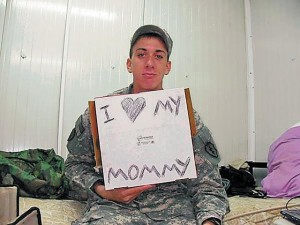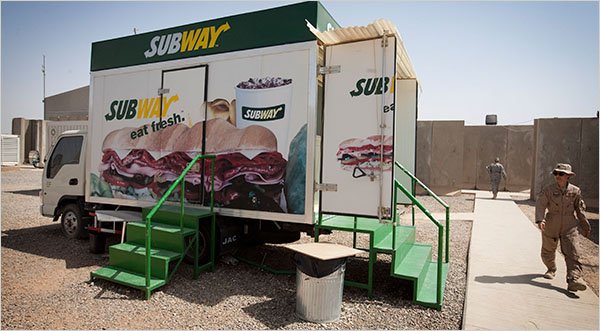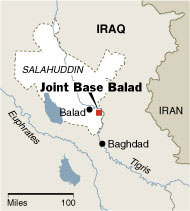http://www.fpif.org/fpiftxt/6407
Afghanistan: What Are These People Thinking?
Conn Hallinan | September 10, 2009
Editor: John Feffer
Foreign Policy In Focus www.fpif.org
One of the oddest – indeed, surreal – encounters around the war in Afghanistan has to be a telephone call this past July 27. On one end of the line was historian Stanley Karnow, author of Vietnam: A History. On the other, State Department special envoy Richard Holbrooke and the U.S. military commander in Afghanistan, General Stanley McChrystal. The question: How can Washington avoid the kind of defeat it suffered in Southeast Asia 40 years ago?
Karnow did not divulge what he said to the two men, but he told Associated Press that the “lesson” of Vietnam “was that we shouldn’t have been there,” and that, while “Obama and everybody else seems to want to be in Afghanistan,” he, Karnow, was opposed to the war.
It is hardly surprising that Washington should see parallels to the Vietnam debacle. The enemy is elusive enemy. The local population is neutral, if not hostile. And the governing regime is corrupt with virtually no support outside of the nation’s capital.
But in many ways Afghanistan is worse than Vietnam. So, it is increasingly hard to fathom why a seemingly intelligent American administration seems determined to hitch itself to this disaster in the making. It is almost as if there is something about that hard-edged Central Asian country that deranges its occupiers.
Delusion #1
In his address to the Veterans of Foreign Wars, Obama characterized Afghanistan as “a war of necessity” against international terrorism. But the reality is that the Taliban is a polyglot collection of conflicting political currents whose goals are local, not universal jihad.
“The insurgency is far from monolithic,” says Anand Gopal, a reporter for the Christian Science Monitor based in Afghanistan. “There are shadowy, kohl-eyed mullahs and head-bobbing religious students, of course, but there are also erudite university students, poor illiterate farmers, and veteran anti-Soviet commanders. The movement is a mélange of nationalists, Islamists, and bandits…made up of competing commanders and differing ideologies and strategies who nonetheless agree on one essential goal: kicking out the foreigners.”
Taliban spokesman Yousef Ahmadi told Gopal, “We are fighting to free our country from foreign domination,” adding, “Even the Americans once waged an insurgency to free their country.”
Besides the Taliban, there are at least two other insurgent groups. Hizb-I-Islam is led by former U.S. ally Gulbuddin Hekmatyer. The Haqqani group, meanwhile, has close ties to al-Qaeda.
The White House’s rationale of “international terrorism” parallels the Southeast Asian tragedy. The U.S. characterized Vietnam as part of an international Communist conspiracy, while the conflict was essentially a homegrown war of national liberation.
Delusion #2
One casualty of Vietnam was the doctrine of counterinsurgency, the theory that an asymmetrical war against guerrillas can be won by capturing the “hearts and minds” of the people. Of course “hearts and minds” was a pipe dream, obliterated by massive civilian casualties, the widespread use of defoliants, and the creation of “strategic hamlets” that had more in common with concentration camps than villages.
In Vietnam’s aftermath, “counterinsurgency” fell out of favor, to be replaced by the “Powell Doctrine” of relying on massive firepower to win wars. With that strategy the United States crushed the Iraqi army in the first Gulf War. Even though the doctrine was downsized for the invasion of Iraq a decade later, it was still at the heart of the attack.
However, within weeks of taking Baghdad, U.S. soldiers were besieged by an insurgency that wasn’t in the lesson plan. Ambushes and roadside bombs took a steady toll on U.S. and British troops, and aggressive countermeasures predictably turned the population against the occupation.
After four years of getting hammered by insurgents, the Pentagon rediscovered counterinsurgency, and its prophet was General David Petraeus, now commander of all U.S. forces in the Middle East and Central Asia. “Hearts and minds” was dusted off, and the watchwords became “clear, hold, and build.” Troops were to hang out with the locals, dig wells, construct schools, and measure success not by body counts of the enemy, but by the “security” of the civilian population.
This theory impelled the Obama administration to “surge” 21,000 troops into Afghanistan, and to consider adding another 20,000 in the near future. The idea is that a surge will reduce the violence, as a similar surge of 30,000 troops had done in Iraq.
Delusion #3
But as Patrick Cockburn of The Independent discovered, the surge didn’t work in Iraq.
With the possible exception of Baghdad, it wasn’t U.S. troops that reduced the violence in Iraq, but the decision by Sunni insurgents that they could no longer fight a two-front war against the Iraqi government and the United States. The ceasefire by Shi’ite cleric and Madhi Army leader Muqtada al-Sadr also helped calm things down. In any case, as recent events have demonstrated, the “peace” was largely illusory.
Not only is a similar “surge” in Afghanistan unlikely to be successful, the formula behind counterinsurgency doctrine predicts that the Obama administration is headed for a train wreck.
According to investigative journalist Jordan Michael Smith, the “U.S/ Army/Marine Corps Counterinsurgency Field Manual” – co-authored by Petraeus – recommends “a minimum of 20 counterinsurgents per 1,000 residents. In Afghanistan, with its population estimated at 33 million, that would mean at least 660,000 troops.” And this requires not just any soldiers, but soldiers trained in counterinsurgency doctrine.
The numbers don’t add up.
The United States and its North Atlantic Treaty Organization (NATO) allies currently have about 64,000 troops in Afghanistan, and that figure would rise to almost 100,000 when the present surge is completed. Some 68,000 of those will be American. There is also a possibility that Obama will add another 20,000, bringing the total to 120,000, larger than the Soviet Army that occupied Afghanistan. That’s still only a fifth of what the counterinsurgency manual recommends.
Meanwhile, the American public is increasingly disillusioned with the war. According to a recent CNN poll, 57% of Americans oppose the war, a jump of 9% since May. Among Obama supporters the opposition is overwhelming: Nearly two-thirds of “committed” Democrats feel “strongly” the war is not worth fighting.
Delusion #4
Afghanistan isn’t like Iraq because NATO is behind us. Way behind us.
The British – whose troops actually fight, as opposed to doing “reconstruction” like most of the other 16 NATO nations – have lost the home crowd. Polls show deep opposition to the war, a sentiment that is echoed all over Europe. Indeed, the German Defense Minister Franz-Joseph Jung has yet to use the word “war” in relation to Afghanistan.
That little piece of fiction went a-glimmering in June, when three Bundeswehr soldiers were killed near Kunduz in northern Afghanistan. Indeed, as U.S. Marines go on the offensive in the country’s south, the Taliban are pulling up stakes and moving east and north to target the Germans. The tactic is as old as guerrilla warfare: “Where the enemy is strong, disperse. Where the enemy is weak, concentrate.”
While Berlin’s current ruling coalition of Social Democrats and conservatives quietly back the war, the Free Democrats – who are likely to join Chancellor Angela Merkel’s government after the next election – are calling for bringing Germany’s 4,500 troops home.
The opposition Left Party has long opposed the war, and that opposition gave it a boost in recent state elections.
The United States and NATO can’t – or won’t – supply the necessary troops, and the Afghan army is small, corrupt and incompetent. No matter how one adds up the numbers, the task is impossible. So why is the administration following an unsupportable course of action?
Why We Fight
There is that oil pipeline from the Caspian that no one wants to talk about. Strategic control of energy is certainly a major factor in Central Asia. Then, too, there is the fear that a defeat for NATO in its first “out of area” war might fatally damage the alliance.
But when all is said and done, there also seems to be is a certain studied derangement about the whole matter, a derangement that was on display July 12 when British Prime Minister Gordon Brown told parliament that the war was showing “signs of success.”
British forces had just suffered 15 deaths in a little more than a week, eight of them in a 24-hour period. It has now lost more soldiers that it did in Iraq. This is Britain’s fourth war in Afghanistan.
The Karzai government has stolen the election. The war has spilled over to help destabilize and impoverish nuclear-armed Pakistan. The American and European public is increasingly opposed to the war. July was the deadliest month ever for the United States, and the Obama administration is looking at a $9 trillion deficit.
What are these people thinking?
Conn Hallinan is a columnist for Foreign Policy In Focus.



